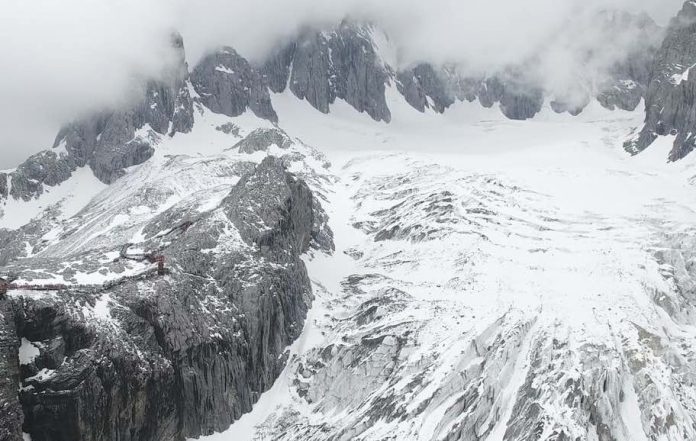A loud crack rang out from the fog above the Baishui No.1 Glacier as a stone shard careened down the ice, flying past Chen Yanjun as he operated a GPS device.
More projectiles were tumbling down the hulk of ice that scientists say is one of the world’s fastest melting glaciers.
“We should go,” the 30-year-old geologist said.
“The first rule is safety.”
Chen hiked away and onto a barren landscape once buried beneath the glacier.
Now there is exposed rock littered with oxygen tanks discarded by tourists visiting the 4,570-metre high blanket of ice in southern China.
Each year millions of people are drawn to Baishui’s frosty beauty on the south-eastern edge of the Third Pole – a region in Central Asia with the world’s third-largest store of ice after Antarctica and Greenland that’s roughly the size of Texas and New Mexico combined.
Third Pole glaciers are vital to billions of people from Vietnam to Afghanistan.
Asia’s 10 largest rivers – including the Yangtze, Yellow, Mekong, and Ganges – are fed by seasonal melting.
“You’re talking about one of the world’s largest freshwater sources,” Ashley Johnson, energy program manager at the National Bureau of Asian Research said.
“Depending on how it melts, a lot of the freshwater will be leaving the region for the ocean, which will have severe impacts on water and food security.”
Earth is today 1 degree hotter than pre-industrial levels because of climate change – enough to melt 28 to 44 percent of glaciers worldwide, according to a new report by the U.N. Intergovernmental Panel on Climate Change.
Temperatures are expected to keep rising.
Baishui is about as close to the equator as Tampa, Florida. And the impacts of climate change already are dramatic.
The glacier has lost 60 percent of its mass and shrunk 250 metres since 1982, according to a 2018 report in the Journal of Geophysical Research.
Scientists found in 2015 that 82 percent of glaciers surveyed in China had retreated. They warned that the effects of glacier melting on water resources are gradually becoming “increasingly serious” for China.
“China has always had a freshwater supply problem with 20 percent of the world’s population but only 7 percent of its freshwater,” Jonna Nyman, an energy security lecturer at the University of Sheffield said.
“That’s heightened by the impact of climate change.”








